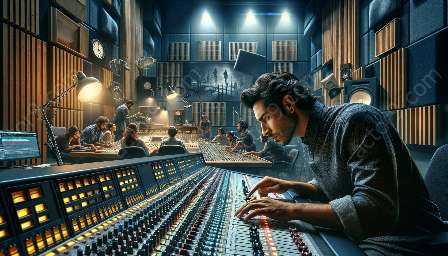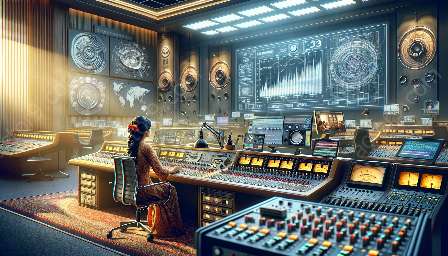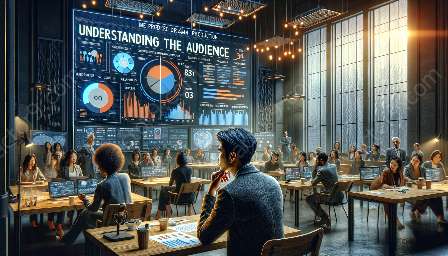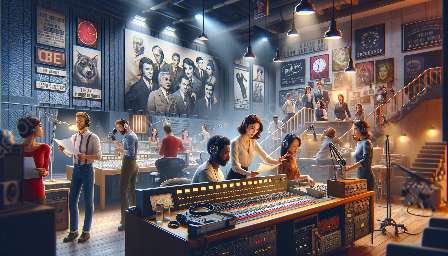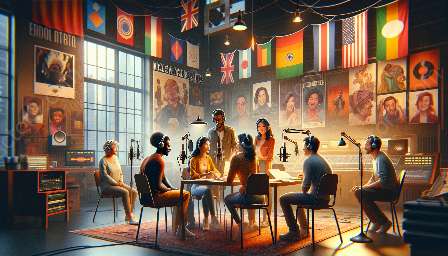RADIO DRAMA VS. STAGE PLAYS: COMPARING STRUCTURE AND NARRATIVE TECHNIQUES
When exploring the world of storytelling and performance, it's crucial to understand the distinctive features of radio drama and stage plays. Both mediums provide opportunities for engaging audiences through unique narrative techniques and structures. In this topic cluster, we will delve into the differences between the two forms of dramatic presentation, and how understanding these variances is essential for writers and producers, particularly in the context of scriptwriting and radio drama production.
The Structure of Radio Drama
Radio drama, also known as audio drama, relies on the auditory senses of the audience to construct a world within their imagination. Unlike stage plays, radio drama lacks the visual component, placing significant emphasis on the use of sound, dialogue, and narrative to convey the story. The absence of visual cues means that the structure of radio drama must be meticulously crafted to guide listeners through the narrative journey.
Typically, radio drama scripts are structured with detailed stage directions and sound effects cues, providing a roadmap for the production team to create a compelling audio experience. Writers must skillfully employ verbal descriptions and engaging dialogue to convey setting, action, and character emotions, as these elements cannot be depicted visually. The structure of radio drama scripts often necessitates a strong reliance on sound design and voice acting to convey the story's nuances and atmosphere.
Narrative Techniques in Radio Drama
Radio drama excels in the use of specific narrative techniques to captivate its audience. For instance, the utilization of sound effects and music becomes pivotal in creating an immersive auditory experience. Timing and pacing play a significant role, as radio drama relies on these aspects to drive the storyline forward and maintain the listener's engagement. Furthermore, the absence of visual cues prompts the effective use of verbal storytelling and dialogue to reveal character development and plot progression.
The Structure of Stage Plays
Conversely, stage plays rely on visual and spatial elements to convey the narrative. The structure of stage play scripts includes detailed stage directions, character movements, and set design instructions. The physical setting and visual elements, such as costumes and props, are integral to the storytelling process in stage plays. The audience experiences the unfolding of the narrative through the actors' performances and the physical environment created on stage.
Stage play scripts allow for a more direct representation of the story, with the spatial dynamics dictating the pacing and delivery of the narrative. The structure of stage plays demands a clear understanding of set design and choreography, as these elements significantly contribute to the audience's perception of the story.
Narrative Techniques in Stage Plays
In stage plays, narrative techniques are manifested through visual storytelling, physical movement, and the dramatization of emotions and conflicts. The use of blocking, gestures, and facial expressions enhances the communication of character motivations and relationships. Additionally, the timing of dramatic pauses and the interaction with the physical environment play a crucial role in accentuating key moments of the narrative.
Writing Scripts for Radio Drama and Stage Plays
Writers and scriptwriters must adapt their approach when crafting scripts for radio drama and stage plays due to the differing structures and narrative techniques inherent in each medium. For radio drama, meticulous attention to sound cues, verbal descriptions, and engaging dialogue is paramount to effectively convey the story in an auditory form. On the other hand, stage play scripts require detailed attention to stage directions, visual elements, and the spatial dynamics of the performance space.
Radio Drama Production
Understanding the unique structure and narrative techniques of radio drama is essential for the production process. Radio drama producers must collaborate closely with writers, sound designers, and voice actors to bring the script to life in an auditory medium. The production team plays a crucial role in creating a rich sonic landscape that complements the narrative, utilizing sound effects, music, and voice modulation to enhance the listener's experience.
Conclusion
Comparing the structure and narrative techniques in radio drama and stage plays reveals the distinct ways in which each medium engages audiences and conveys stories. Writers and producers must recognize the nuances of these differences when crafting scripts and orchestrating productions. By understanding the unique requirements of radio drama and stage plays, storytellers can harness the power of each medium to captivate audiences and bring compelling narratives to life.





